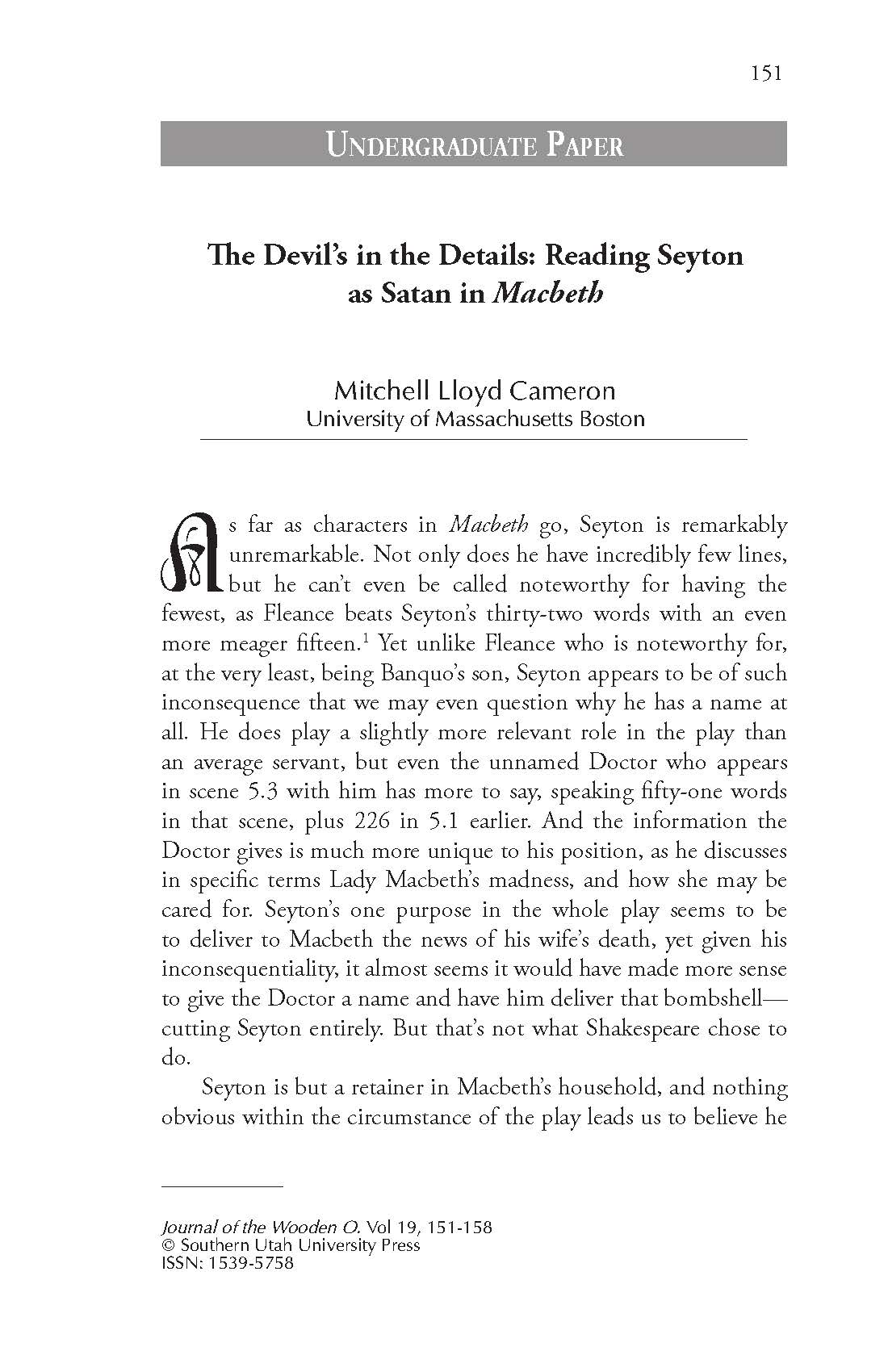The Devil’s in the Details: Reading Seyton as Satan in Macbeth
Main Article Content
Abstract
As far as characters in Macbeth go, Seyton is remarkably unremarkable. Not only does he have incredibly few lines, but he can’t even be called noteworthy for having the fewest, as Fleance beats Seyton’s thirty-two words with an even more meager fifteen.1 Yet unlike Fleance who is noteworthy for, at the very least, being Banquo’s son, Seyton appears to be of such inconsequence that we may even question why he has a name at all. He does play a slightly more relevant role in the play than an average servant, but even the unnamed Doctor who appears in scene 5.3 with him has more to say, speaking fifty-one words in that scene, plus 226 in 5.1 earlier. And the information the Doctor gives is much more unique to his position, as he discusses in specific terms Lady Macbeth’s madness, and how she may be cared for. Seyton’s one purpose in the whole play seems to be to deliver to Macbeth the news of his wife’s death, yet given his inconsequentiality, it almost seems it would have made more sense to give the Doctor a name and have him deliver that bombshell—cutting Seyton entirely. But that’s not what Shakespeare chose to do.
